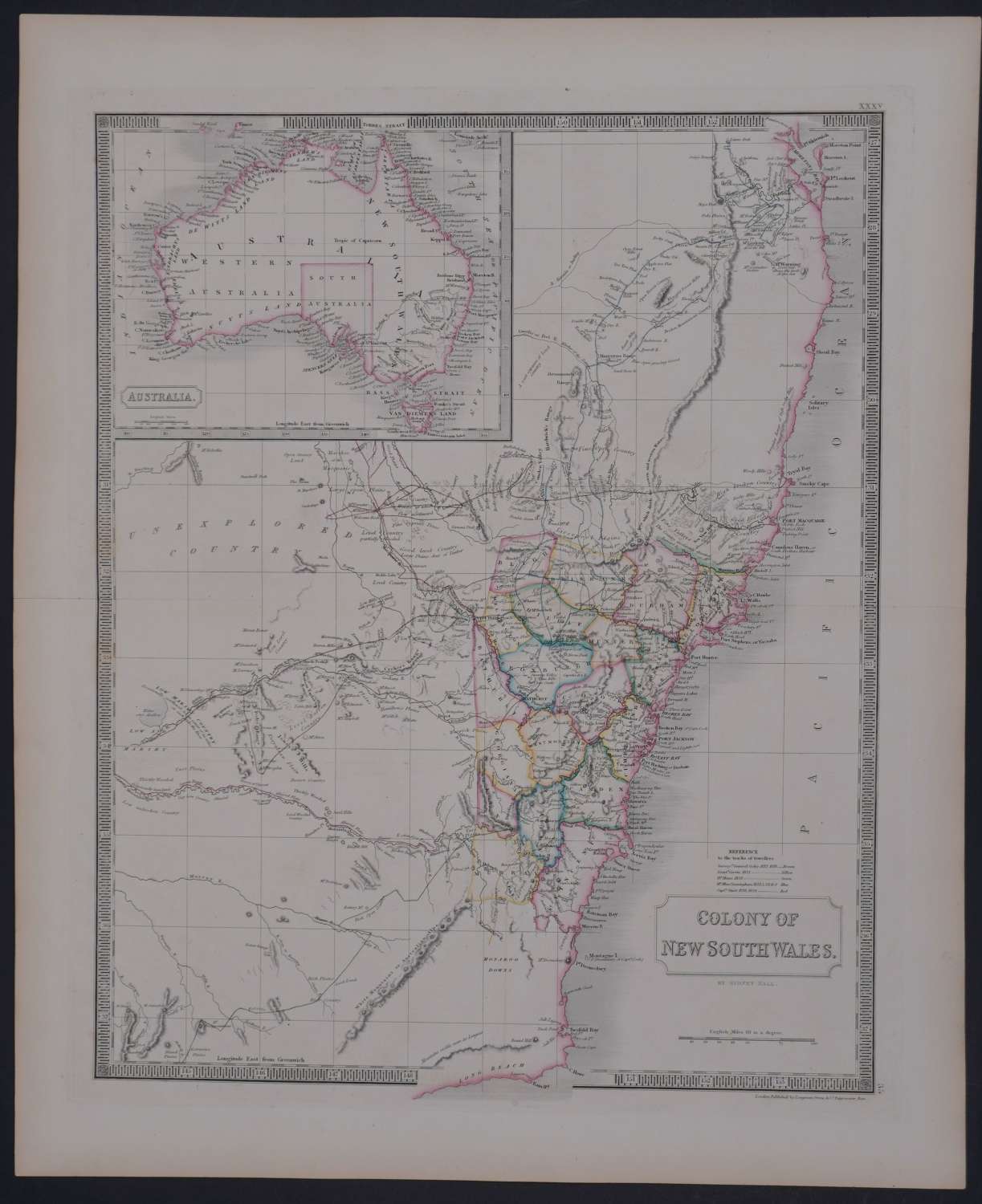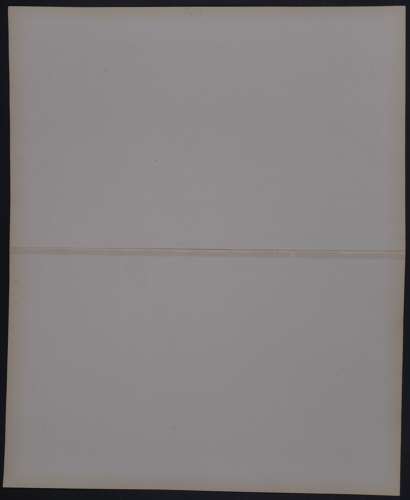

Code: 54195
Date: 1842
Steel engraving with original hand colouring. Centrefold as published. Overall size 50.2cms x 61.4cms; image size: 413mm x 614mm. Piano key border.
Ref: The Mapping of Australia and Antarctica p. 93 no. 686. Tooley. Divided into 19 counties. Inset of the whole of Australia top left. Unexplored Country in mid left blank, Reference key to the tracks of the explorers just above title. Slight browning to margins and very faintly at centrefold bottom around Monaroo Downs else Fine condition.
New South Wales was the first British colony in Australia in 1788. It originally referred to the entire Eastern half of Australia. It was set up specifically to act as a penal colony. The British had previously used Georgia for this purpose in what was regarded at the time as an enlightened way of giving criminals a second chance. With the American Revolution, the British government had to consider alternatives. James Cook had mapped and claimed the area of New South Wales in 1770 and advised that it seemed to have a reasonable climate and sources of fresh water. Little mention was made of the aboriginal inhabitants who were thought to be too primitive and too sparse to cause any problems to colonisation. In 1788 Captain Arthur Phillip arrived with a fleet of 11 ships to try and carve out a colony with its unwilling cargo of passengers on the other side of the planet. It was originally intended that he would settle at Botany Bay but it did not offer a suitable anchorage nor a decent supply of water. He therefore explored for a better site and landed at Sydney cove which was a fine natural harbour that he named after the British home secretary. This map is a snapshot of the country 54 years after this settlement.
Sidney Hall was an engraver, cartographer and copperplate printer. Worms and Baynton-Williams state in,'British Map Engravers' that Hall was almost certainly the first engraver to use the new harder steel plates for map work, using plates manufactured by the Jacob Perkins process as early as 1821. He died at the age of forty two and his widow Selina Hall, continued the business, her practice of signing her engravings simply as ,'S.Hall' has caused much confusion among bibliographers.